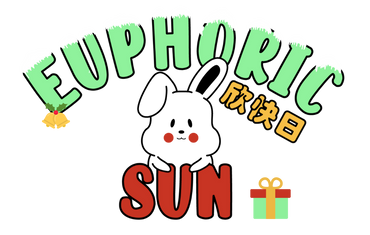
Celebrate the Winter Festival (Dong Zhi) with Euphoric Sun ❄️
Celebrate the Winter Festival (Dong Zhi) with Euphoric Sun ❄️
Winter Solstice and Asian Culture Background:
This year’s winter solstice is on December 21st! Why is the winter solstice significant? It's on the winter solstice when the earth's axis tilts the farthest away from the sun, making it the shortest day and longest night of the year for those living in the Northern Hemisphere. This seasonal phenomenon gave rise to the Winter Solstice Festival, aka the Dongzhi Festival!
As early as 2,500 years ago around 770 to 476 BC, China had determined the point of Winter Solstice by observing movements of the sun with a sundial. After the Winter Solstice passed, days became longer and longer. As the ancient Chinese thought, the yang, or positive things will become stronger and stronger after this day, so it should be celebrated. The Winter Solstice then became a festival during the Han Dynasty (206 BC-220 AD).
Dongzhi aka Winter Festival Foods:
In some parts of Northern China, people eat dumpling soup on this day; while residents of some other places eat dumplings, it’s said that doing this will keep away the frost in the upcoming winter! In parts of Southern China, the whole family will get together to have a meal made of red-bean and glutinous rice. It’s said that this tradition is to drive away ghosts and other evil things. In other places, people also eat tangyuan, a kind of stuffed small dumpling ball made of glutinous rice flour. Tangyuan can have different flavors aside from the regular sweet rice flavor, like pandan or even red bean.
Other kinds of food traditionally eaten during this festival include crispy buns, wontons, mutton soup, daikon, duck, and the Eight Treasures Porridge (includes eight ingredients that are believed to strengthen the spleen, warm the stomach, and protect the body against the winter coldness and dryness).

Here are our Winter Festival inspired glosses.


The Winter Solstice rice dumplings could be used as sacrifices to ancestors, or gifts for friends and relatives. Family clans also gather at their ancestral temples to worship their ancestors in age order. After the sacrificial ceremony, there is always a grand banquet.
The most well known tradition of the Dongzhi Festival is eating glutinous rice balls known as tangyuan, but the name is a homonym for “family reunion”. These glutinous white or sometimes coloured balls are made out of rice flour and can either be eaten plain or filled with flavors such as red bean paste or sesame. Served in a hot sweetened soup, tang yuan is not just enjoyed during the Dongzhi, but enjoyed all year, especially during the winter months when you need something warm to eat.
The round shape of the rice balls symbolizes unity and prosperity, which is ideal on the gloomiest day of the year (again, this day is the longest night of the year). Sometimes red rice balls are added to the soup to secure luck and brighter times ahead!

Our "Good Soup" tote bags are inspired by tangyuan or glutinous rice ball soup!

Winter Festival Traditions:
The main Chinese Winter Solstice traditions are worshiping the Heavens, worshiping your ancestors, and counting the Nines of Winter. The Nines of Winter refers to the nine periods of nine days starting the Winter Solstice.
People cannot even put their hands in cold air in the first and second nine days; walking on ice can be achieved in the third and fourth nine days; willows on the banks start to sprout in the fifth and sixth nine days; ices dissolve and water flows freely in the river in the seventh nine days; in the eighth nine days, wild geese fly back to northern areas, and for the following days, farm cattle start to work in the field. The most interesting aspect of counting the Nines of Winter is the fact that it’s a folk song record of the weather changes at the time and a way to guide farmers for when it was optimal to go back to work.
The Winter Solstice is not only celebrated in China, but in several countries around the world! There is the Yule Festival in Europe, the Winter Sunrise tradition at Stonehenge in England, Las Hogueras in Spain, the Yuzu Hot Spring Tradition in Japan, Yalda Night before the Winter Solstice in Iran, and many more!
